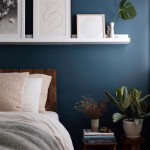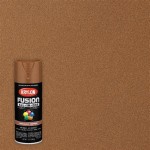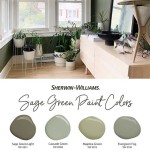How To Choose The Right Interior Paint Color For Your Home
Selecting the right interior paint color is a crucial decision for any homeowner. The colors chosen can significantly impact the ambiance, perceived size, and overall aesthetic appeal of a living space. A well-considered color palette can transform a house into a home, reflecting personal style and creating a comfortable environment. However, the sheer variety of paint colors available can be overwhelming. A systematic approach, taking into account various factors, is essential to making informed choices and achieving desired outcomes.
Understanding the Psychology of Color
Color psychology plays a vital role in how individuals perceive and react to their surroundings. Different colors evoke different emotions and feelings, influencing mood and behavior. Awareness of these psychological effects can aid in selecting colors that align with the desired atmosphere for each room.
Blue, for example, is often associated with calmness, serenity, and stability. It is frequently used in bedrooms and bathrooms to create a relaxing and peaceful environment. However, darker shades of blue can sometimes feel cold and formal, so it is important to select the right hue based on the room's purpose and natural light.
Green is another popular choice, often linked to nature, growth, and tranquility. It can be a versatile color, suitable for various rooms, including living rooms, bedrooms, and even kitchens. Lighter shades of green tend to create a more refreshing and airy feel, while darker shades can add depth and sophistication.
Yellow is associated with optimism, happiness, and energy. It can brighten up a room and create a cheerful atmosphere. However, it is important to use yellow sparingly, as excessive amounts can be overwhelming or even agitating. It is often best used as an accent color or in spaces where a sense of energy is desired, such as kitchens or hallways.
Red is a powerful and passionate color, often associated with excitement, energy, and warmth. It can be a stimulating color, best used in areas where activity and social interaction take place, such as dining rooms or living rooms. However, red can also be overwhelming, so it is important to use it carefully and balance it with neutral tones.
Purple is often associated with royalty, luxury, and creativity. It can be a sophisticated and elegant color, suitable for bedrooms, living rooms, or even home offices. Lighter shades of purple, such as lavender, can create a calming and relaxing atmosphere, while darker shades can add drama and richness.
Neutral colors, such as white, gray, beige, and brown, are versatile and timeless. They provide a neutral backdrop that allows other elements in the room to stand out. These colors can create a sense of spaciousness and airiness, making them ideal for smaller rooms or spaces with limited natural light. They also serve as excellent complements to bolder accent colors.
Considering the Room’s Purpose and Lighting
The function of a room and the amount of natural and artificial light it receives are crucial factors to consider when selecting paint colors. A room's purpose dictates the desired atmosphere, while lighting influences how the color appears and feels within the space.
For bedrooms, creating a relaxing and calming environment is often the priority. Soft, muted colors, such as blues, greens, lavenders, or neutral tones, are typically good choices. Avoid bright, stimulating colors, such as reds or yellows, which can hinder relaxation and sleep.
Living rooms, being spaces for socializing and relaxation, can accommodate a wider range of colors. Warmer colors, such as oranges, reds, or yellows, can create a welcoming and cozy atmosphere. Cooler colors, such as blues or greens, can promote a sense of calm and serenity. The choice depends on the homeowner's personal preferences and desired ambiance.
Kitchens often benefit from bright and cheerful colors, such as yellows, oranges, or greens. These colors can stimulate appetite and create a sense of energy. However, it is important to consider the overall style of the kitchen and choose colors that complement the cabinets, countertops, and appliances.
Bathrooms, being spaces for personal hygiene and relaxation, often benefit from calming and refreshing colors, such as blues, greens, or whites. These colors can create a sense of cleanliness and serenity. Lighter colors can also make a small bathroom feel more spacious.
Home offices should ideally promote concentration and productivity. Neutral colors, such as grays, beiges, or whites, are often good choices. Accents of blue or green can add a touch of calmness and creativity, while avoiding overly stimulating colors, like bright red, is advisable.
Natural and artificial lighting significantly impacts how a paint color appears in a room. Colors tend to appear brighter and more intense in well-lit spaces. Conversely, colors can appear darker and more muted in rooms with limited natural light. To compensate for this, lighter shades are generally recommended for darker rooms, while deeper shades can be used in well-lit spaces.
It is essential to test paint colors in the actual room before committing to a full paint job. Paint a small area of the wall and observe how the color looks at different times of day and under different lighting conditions. This will help ensure that the chosen color achieves the desired effect and aligns with personal preferences.
Considering Existing Furnishings and Architectural Details
The existing furnishings and architectural details of a home play a significant role in determining the ideal paint colors. The paint colors should complement and enhance the existing elements, creating a cohesive and harmonious overall design.
The color of the furniture should be taken into consideration when selecting paint colors. If the furniture features bold or vibrant colors, it is often best to choose neutral paint colors to avoid overwhelming the space. Conversely, if the furniture is neutral in color, bolder paint colors can be used to add personality and interest to the room.
The style of the furniture should also be considered. For example, traditional furniture often pairs well with classic and elegant paint colors, such as creams, beiges, or muted greens. Modern furniture often looks best with bold and contemporary paint colors, such as grays, whites, or blacks.
Architectural details, such as trim, moldings, and fireplaces, can also influence the choice of paint colors. The trim and moldings are often painted in a contrasting color to the walls to highlight their architectural features. Fireplaces can serve as focal points in a room, and the paint color surrounding them can be chosen to accentuate their presence.
The flooring material and color should also be considered. Hardwood floors often pair well with warm and natural paint colors, such as beiges, browns, or greens. Tile floors can accommodate a wider range of paint colors, depending on the tile's color and style. Carpeted floors often benefit from paint colors that complement the carpet's color and texture.
The overall style of the home should also be taken into consideration when selecting paint colors. A traditional home often benefits from classic and timeless paint colors, while a modern home can accommodate bolder and more contemporary colors. The goal is to create a cohesive and harmonious design that reflects the homeowner's personal style and preferences.
Furthermore, taking into account the undertones of existing elements is crucial. Colors are rarely pure; they often possess subtle undertones of other colors. Matching or complementing these undertones ensures a cohesive and harmonious look. For instance, a beige with a pink undertone pairs well with other warm tones, while a beige with a green undertone complements cooler colors.
Utilizing color swatches and paint samples is an indispensable step in the selection process. Viewing colors in the context of the room, alongside existing furnishings and architectural features, provides a more accurate representation of the final result. It is important to observe the colors under different lighting conditions, both natural and artificial, to ensure satisfaction with the chosen palette.

Interior Paint Ideas 12 Tips To Help You Get The Right Wall Color Extra Space Storage

How To Choose The Paint Color For A Living Room In Harrison Twp Mi Eason Painting

10 Tips For Choosing The Right Paint Colours Your Home Buildeasy Design And Build Solution

How To Choose Interior Paint Colors For Your Home

A Guide To Choosing The Right Accent Wall Color Paint Fillo

9 Ways To Select The Perfect Home Colours For Your House

Tips For Choosing The Right Colors Your Home Interiors

How To Choose Right Paint Colors For Your Home Interiors Latest Property News Blog Articles Homebazaar Com

Choosing Right Colors How To Use Psychology For Interior Design

Matching Furniture Wall Paint Best Color Combinations
Related Posts








